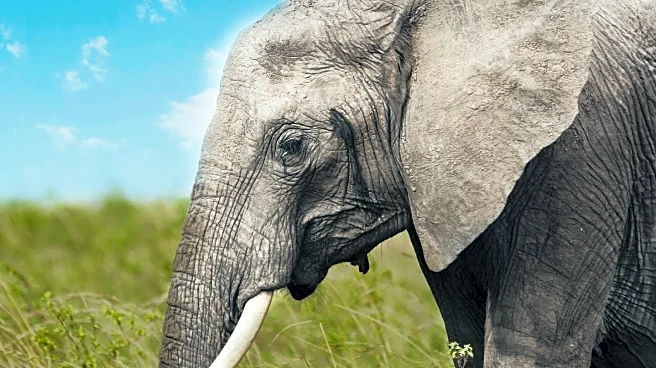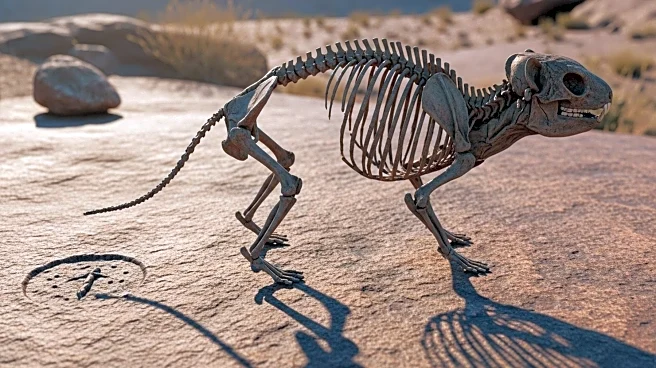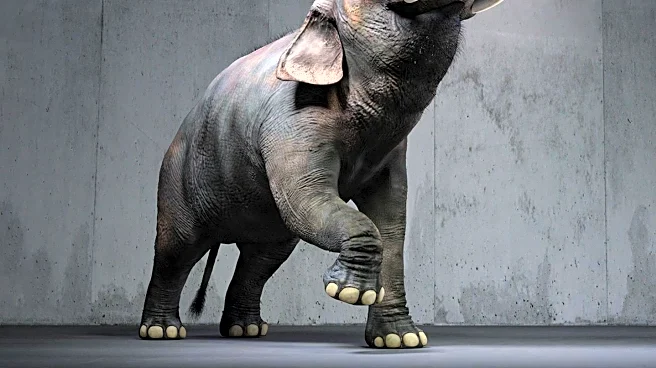What is the story about?
What's Happening?
Recent observations highlight the complexity of animal communication, with dogs and elephants demonstrating unique language skills. Dogs, like Mr. Waffles, a Yorkshire terrier, use pre-programmed electronic buttons to communicate with humans, showcasing their ability to grasp elements of human language. Elephants, on the other hand, use specific vocalizations to address members of their group, indicating a form of naming. These findings suggest that animal communication is more intricate than previously imagined, involving various methods such as sound, color, smell, and vibrations.
Why It's Important?
Understanding animal communication on their terms rather than through a human-centric lens can lead to deeper insights into their social structures and survival strategies. This knowledge can enhance conservation efforts and improve human-animal interactions. Recognizing the complexity of animal language challenges traditional views and encourages a more respectful and informed approach to wildlife studies. It highlights the need for interdisciplinary research to fully appreciate the diverse ways animals communicate.
Beyond the Headlines
The study of animal communication raises ethical considerations about how humans interact with and impact animal habitats. It also prompts discussions on the cultural significance of animals in human societies and the potential for technological advancements to bridge communication gaps. Long-term, this research could influence policies on wildlife protection and inform educational programs about biodiversity.
AI Generated Content
Do you find this article useful?













